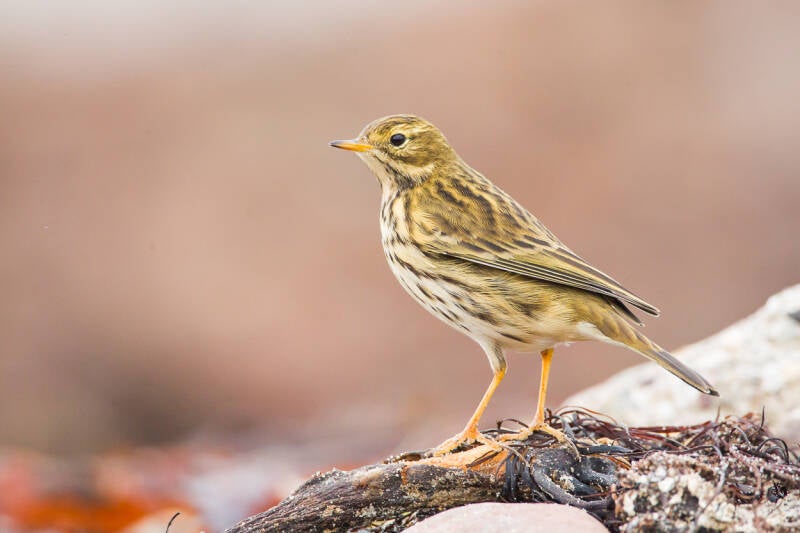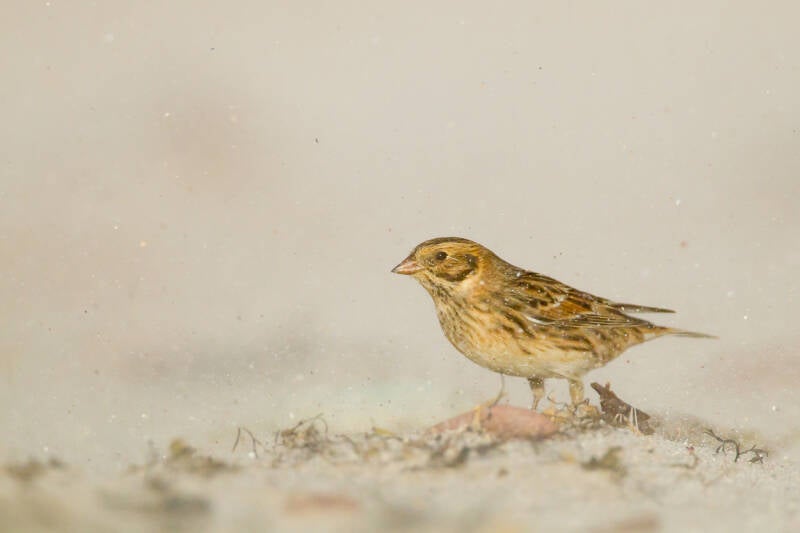Helgoland 2019
Thursday 10 October
The alarm goes just after midnight and a half hour later Frank, Rein and I are heading to Utrecht where we meet Hans, Sander, Wouter and Martijn. From there it's a 4,5 hour drive to Cuxhaven. The wind and rain make it quiet a challenge for the drivers, especially the last bit that we have to go cross country with no lanterns.
We make it and park the car the board the ferry. With the stormy wind from the northwest we hope to see some nice seabirds on our way to Helgoland. A group of teenagers act tough but are crying for their mothers one hour later.


The whole way we stay out on the deck accompanied by some chumming volunteers. We end up with a handful of Arctic Skuas and a selection of ducks, razorbills and guillemots.

Just after we got off the ship we see the Red Kite flying around the island. In the gardens loads of Meadow Pipits, Chaffinches and Song Thrushes look from some shelter and food.
We take some shots of the kite and continue our way to the Aquarium Apartment where we'll be staying. After we dropped our stuff we connect with some friends who arrived the day before and are staying at Haus Patria.

We stay on the lee side of the island and go to the north beach which we've been told always deliver some nice birds. The rotting weed is food for the larvae of the numerous flies which attract masses of birds. Mostly Meadow Pipits, White Wagtails and gulls. A Jack Snipe is pointed out by some friendly birders.

On the other side of the beach a Lapland Bunting is reported and we rush ourselves to there. Lapland Buntings breed on the tundra near the arctic circle and probably haven't seen any people before. the bird is very cooperative but the wind often blows the sand in our faces when we lie down to get some eye-level photos. Despite the strong wind it's a nice start of the trip and when the light is fading we head back to our apartments.

Friday 11 October
Via the Kurpark we walk back to the north beach. At the park a female Common Redstart looks for insects where in the summer tourist lie on the grass to sunbathe. Because of the wind it's hard to look for small birds in the bushes.

Again there are loads of birds present at the beach. On the small pier some Turnstones and Sanderlings come to bathe in the fresh water in the cracks of the concrete. While resting the lens on the side we can photograph them at eye-level.


We walk closer to the cliffs where the smaller birds find shelter from the wind. In the group of Meadow Pipits and White Wagtails we find a late Tree Pipit and an immature Pied Wagtail. From the rosebushes on the dike a couple of Stonechats snatch the flies out of the sky.


In the app-group we receive a message that a Jack Snipe is showing well at the compost dump. The snipe keeps a close eye to us and therefore stays still the whole time trusting on its camouflage. Normally they prefer to stay between high grass or reeds but there's non of the last at Helgoland. For the rest it's quiet as the strong west wind prevails any arrival of migrants.

Saturday 12 October
Still no improvement in the weather. In the berries some Song Thrushes gorge themselves to fatting up for the rest of their migration south when the weather allows to.

The only place where we can see birds is the north beach again. A large flock of Eider is present and close to the shore. The males are displaying and often pushed off by the females. All the White Wagtails and the Lapland Bunting are still present so we spend some time photographing those.



There's a large gathering of gulls on the pier, mostly of Greater Black-backed Gulls but when I look closely I find an immature Shag

The group of German birders don't understand me when I try to tell them about the bird, they have more attention for a Purple Sandpiper that's on the beach side of the pier.

We are getting hungry and decide to have lunch. Wouter has bought a whole collection of different sausages to try out the local cuisine. We settle for some toast and fried eggs. On our way we find a nice Spotted Flycatcher and Common Redstart that shows there are some songbirds still hiding in the vegetation.

After the lunch we all go to Dune, the smaller sand island next to Helgoland. We walk around the island clockwise and on the north beach find a flock of waders including some Grey Plovers.

Helgoland is known for the variation in the local crows which are a mix of Carrion and Hooded Crows. They come in a wide range from the classic black Carrion Crow to the an almost full Carrion Crow but more a mix in between.


A group that is ahead of us are lucky to observe a Bluetail coming out from sea, landing on the beach before heading into the vegetation on the center of the island not to be found. We have to settle with some Snow Buntings, Shore Larks and a very tame Northern Wheatear that hang around a concentration of Grey Seals. In the harbour we find a Black Guillemot before taking the ferry back.






Sunday 13 October
A window of opportunity, the wind moved from NW to S and because of the low clouds and drizzle loads of birds where disorientated. At those moments when they see Helgoland it's a true magnet. Wouter and I positioned ourselves at the south end and witnessed thousands of birds coming down out of the clouds. The majority where Redwings, Song Thrushes and Chaffinches that came down but mostly continued their way south. Nevertheless an impressive fall of birds.
After we informed the others we started at the top of the island to look for meadows and larks, nothing special there only a sad looking Rook. At the north tip a Gannet was looking evenly surprised at us.
A dead Common Guillemot entangled in the nets was a silent witness of the risk of using nets as nesting material for many seabirds.


We checked down the lower part of the island where we flushed a quartet of Long-eared Owls. Maybe on of the birds that Wouter and I saw hunting in the lighthouse lights trying to catch the songbirds attracted by the light.

A autumn visit to Helgoland can't go without seeing a Yellow-browed Warbler but all the days we didn't see one. When we walked back to pick up our stuff the message came through a bird was present at the south harbour. In the last two hours before we had to leave we could connect with this very cooperative bird that stayed in some low bushes together with some Goldcrest and a Stonechat.

With this pretty warbler in the pocket we got on board of the MS Helgoland. While waiting to sail a Cormorant caught a Cod but a Herring Gull was also interested but both weren't able to swallow the fish. After that a Razorbill checked out where all the fuzz was about but saw that this was a bit out of its range.

